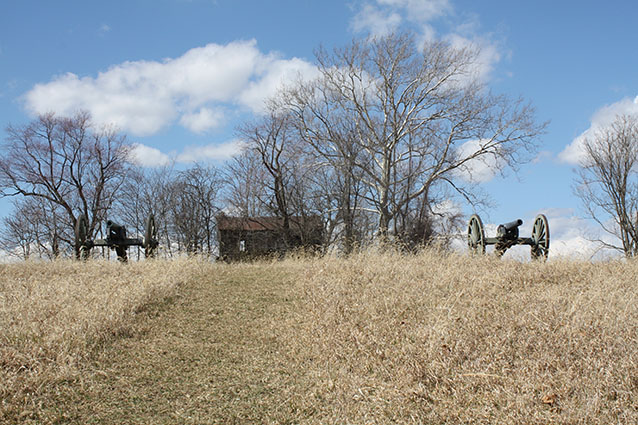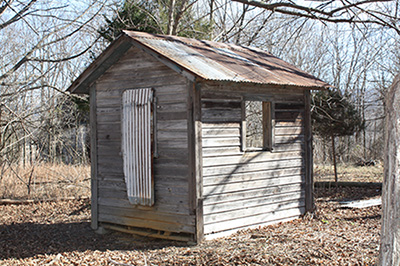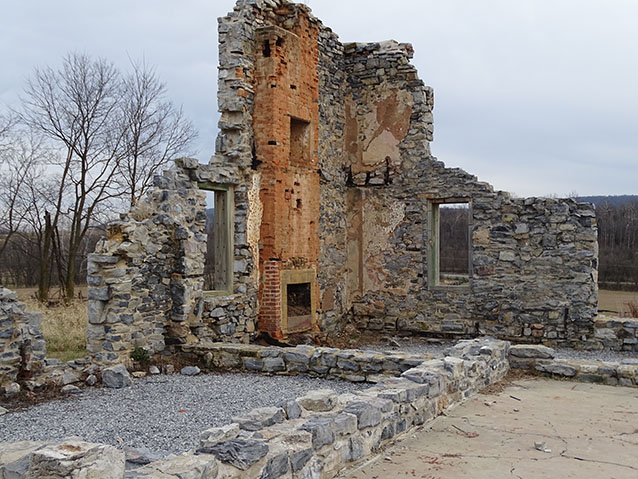The Allstadt Farm, approximately two miles southwest of the town of Harpers Ferry, was once a prosperous farmstead, initially farmed by tenants and eventually owned by Pennsylvania Germans who had migrated to the area in the early 1800s. It is also significant for its association with John Brown's Raid on Harpers Ferry, the Civil War Battle of Harpers Ferry, and the industrial history of the area during the first half of the 1900s.
In addition to his agricultural operation, Jacob Allstadt operated a tavern in his dwelling. Although it is unknown how brisk a business the tavern did, an inventory of his estate at the time of his death (1821) suggests he was a successful farmer.

NPS
Harpers Ferry National Monument was established in 1944 and re-designated Harpers Ferry National Historical Park in 1963. The Allstadt Farm cultural landscape became part of the park with the 2004 approval of a boundary expansion. The farm area currently managed by the National Park Service (over 266 acres) is part of the approximately 672 acres that constituted the Allstadt Farm as it existed at the time of John Brown’s Raid in October 1859 and the Battle of Harpers Ferry in September 1862.
The Allstadts grew a number of small grains: primarily wheat, along with corn, rye, and oats. In addition to livestock, wheat was one of the most important agricultural commodities produced in the Shenandoah Valley during the late eighteenth and first half of the nineteenth centuries, eventually displacing tobacco culture.

NPS
The Allstadts owned quite a few slaves to assist in agricultural production and increase social standing at that time. The 1850 census gives a count of 13 enslaved persons. The presence of slaves in the area, as well as the proximity of the federal arsenal which could supply weapons to newly-freed slaves, figured prominantly in John Brown's plan to carry out the raid in Harpers Ferry.
The Allstadt Farm landscape is associated with four distinct areas of significance and periods of history:
-
Agricultural history (1793 to 1901) - The farm is an example of a prosperous farmstead initially farmed by tenants and eventually owned and operated by Pennsylvania Germans, who had migrated to the Shenandoah Valley in the early 1800s.
- Social history (1859 to 1861) - The Allstadt Farm landscape was involved with John Brown’s Raid on Harpers Ferry, an event that profoundly impacted the issues of slavery and secession at the national level.
- Military history (1861 to 1865) - It was a significant place in the Battle of Harpers Ferry during the Civil War, which culminated in the largest surrender of federal troops during the course of that conflict.
- Industrial history (1901 to 1957) - A successful dolomite limestone quarrying operation was established on the property in the early twentieth century. The operation grew to include numerous industrial buildings and worker's houses that were part of the company town of Millville.

NPS
Portions of the cultural landscape property are among the earliest acquired by Jacob Allstadt and have been farmed continuously since at least 1793. Crop selection and rotation today is consistant with historic conditions. One historic feature missing from the contemporary landscape appears to be the orchard, which was established in the 1860s.
Overall, the Allstadt Farm retains integrity in its vegetation since it has remained cleared and used for farming rather than abandoned like many other agricultural properties of the region.
The John H. House and barn may have been present during the John Brown Raid and the Battle of Harpers Ferry. Although many of historic buildings of the cultural landscape are in ruinous condition and some have been removed for safety, enough evidence remains to convey their spatial organization.
There are other remaining historic features of the landscape, such as fencing, a well, a cemetery, and roads and railroads.
Quick Facts
- Cultural Landscape Type: Vernacular
- National Register Significance Level: National
- National Register Significance Criteria: A
- Period of Significance: 1793-1957
Landscape Links
Last updated: October 8, 2021
